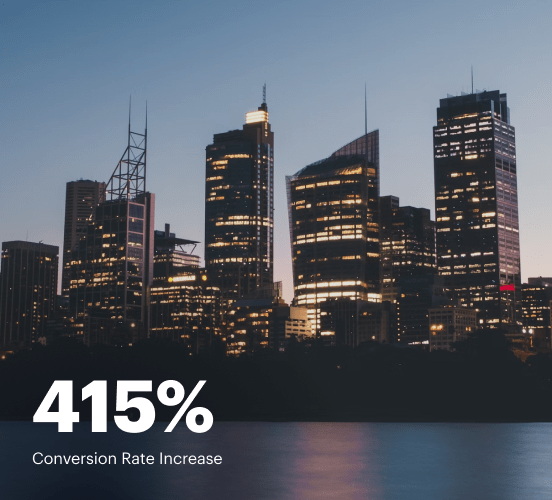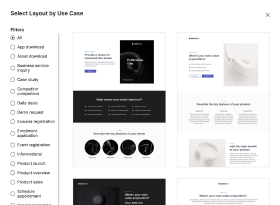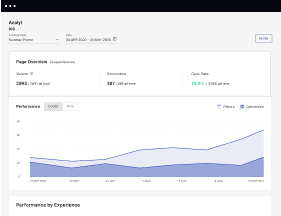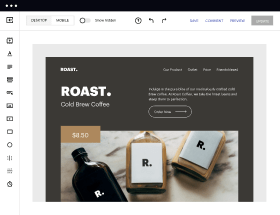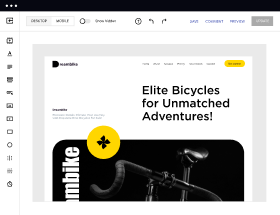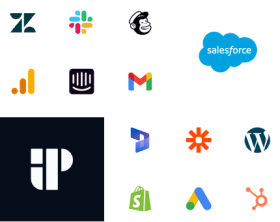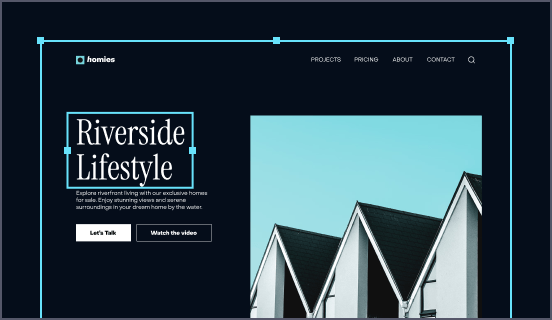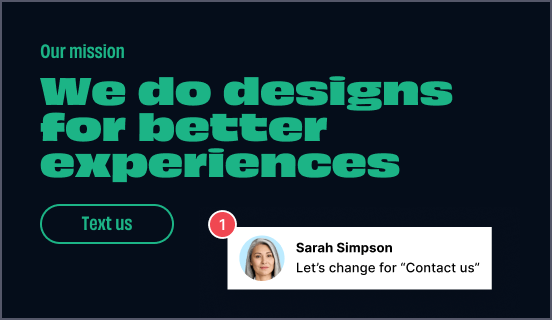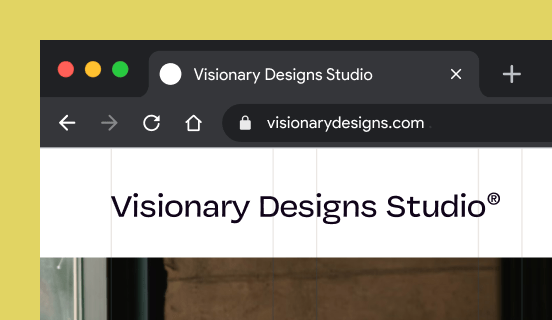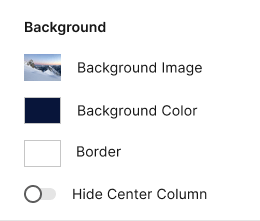Paperform vs. Typeform: the best platform for a seamless web experience
Discover how Paperform compares to Typeform regarding features and usability. Find out which platform provides the competitive advantage your business deserves.
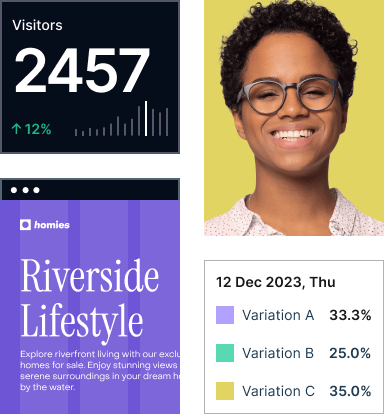
See how Instapage stacks up against the competition
| Feature | Instapage | Other builders |
| A/B Testing | ||
| Drag-and-Drop Tools | ||
| No Coding | ||
| AI Content | ||
| AdMap® | ||
| Instablocks | ||
| Real-time collaboration | ||
| Domains | Unlimited | Limited |
Easier page building without coding
Instapage offers a flexible and seamless page creation experience with a library of 500+ conversion-focused layouts, Instablocks®, a drag-and-drop builder, and AI content generation. With technologies like AMP and the Thor Render Engine®, you can create on-brand, mobile-responsive landing pages that load quickly and start converting during initial visitor clicks.
More insights — better results
Instapage lets you see in detail how each landing page experience and variation is performing so you can make targeted changes that boost page conversions. Use heatmaps for a better understanding of on-page activities, run A/B tests and AI-assisted experiments, and then track and evaluate results within robust analytics dashboards.
More personalized experiences
Instapage lets you quickly create high-performing landing pages tailored to each of your ad campaigns. Deliver personalized experiences for distinct audiences using dynamic text replacement. Effortlessly align specific advertisements to unique pages with AdMaps. Monitor audience-level metrics using our advanced data tools.
Built-in collaboration
Instapage collaboration capabilities bring your entire team together to speed up the process of landing page review, approval, and launch. No more frustrating and unnecessary revisions or edits scattered across emails. Provide instant feedback, conduct real-time page edits, and securely share your pages with outside stakeholders.
All your favorite apps working together with Instapage
With 120+ integrations, Instapage easily connects with your favorite advertising, CRM, email, e-commerce, marketing, and sales solutions.
Explore all integrations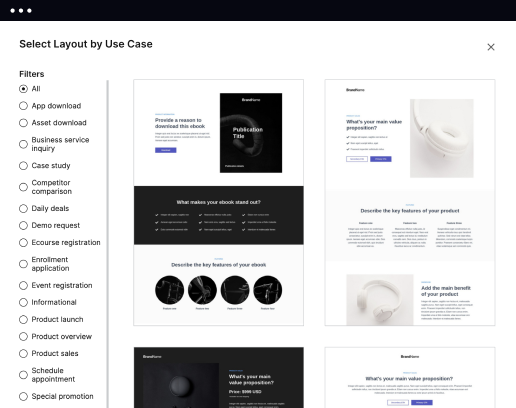
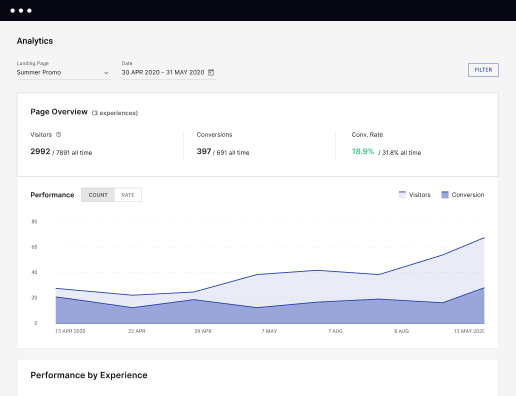
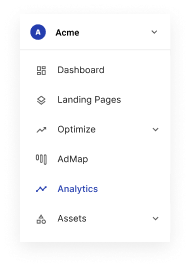
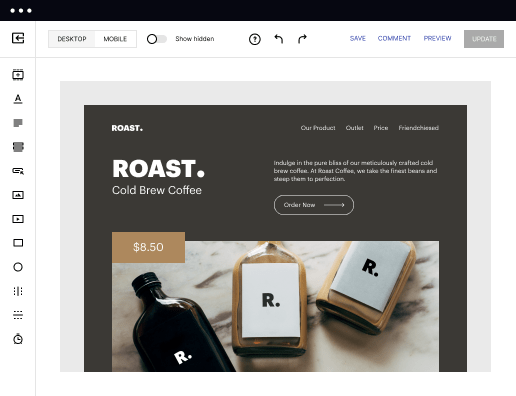
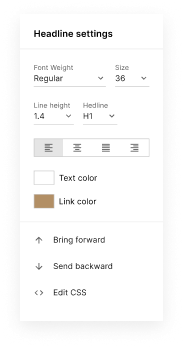
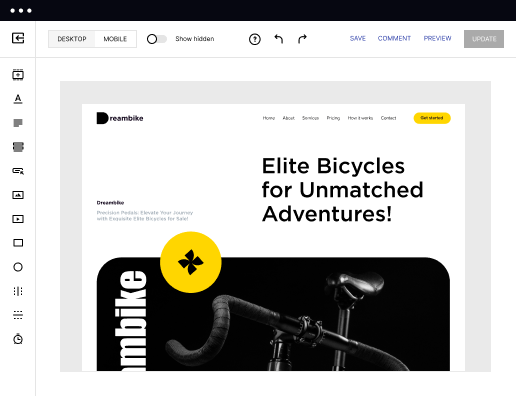
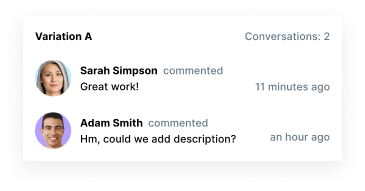

Easier page building without coding
Instapage offers a flexible and seamless page creation experience with a library of 500+ conversion-focused layouts, Instablocks®, a drag-and-drop builder, and AI content generation. With technologies like AMP and the Thor Render Engine®, you can create on-brand, mobile-responsive landing pages that load quickly and start converting during initial visitor clicks.
More insights — better results
Instapage lets you see in detail how each landing page experience and variation is performing so you can make targeted changes that boost page conversions. Use heatmaps for a better understanding of on-page activities, run A/B tests and AI-assisted experiments, and then track and evaluate results within robust analytics dashboards.
More personalized experiences
Instapage lets you quickly create high-performing landing pages tailored to each of your ad campaigns. Deliver personalized experiences for distinct audiences using dynamic text replacement. Effortlessly align specific advertisements to unique pages with AdMaps. Monitor audience-level metrics using our advanced data tools.
Built-in collaboration
Instapage collaboration capabilities bring your entire team together to speed up the process of landing page review, approval, and launch. No more frustrating and unnecessary revisions or edits scattered across emails. Provide instant feedback, conduct real-time page edits, and securely share your pages with outside stakeholders.
All your favorite apps working together with Instapage
With 120+ integrations, Instapage easily connects with your favorite advertising, CRM, email, e-commerce, marketing, and sales solutions.
Explore all integrationsLeading the way in building high-performing landing pages
Get started with Instapage in a few steps
Create your Instapage account
Start with Instapage by signing up via Google or your email. You'll get access to a free 14-day trial to discover Instapage capabilities. Feel free to cancel anytime during the 14-day trial if you decide that our product is not suitable for your business.
Build and personalize your page
Create your first landing page from scratch or choose a template from 500+ customizable layouts. Use the drag-and-drop builder to add page elements, fonts, and backgrounds, refine content with AI, or add custom HTML, Javascript, and CSS.
Review and make edits
Collaborate on page designs and streamline review processes. Invite your team members and stakeholders to review, edit, and provide feedback on your landing page. Collaborate knowing your page is confidential and only accessible to authorized users.
Publish and track page performance
Publish your page to a domain or custom URL. Connect your pages to the ads you've created and track page performance within the analytics dashboard, run A/B tests and AI experiments, analyze results, and continuously optimize your landing page to maintain high conversions.
Paperform vs. Typeform: A Comprehensive Clash with an Unexpected Contender
In the expansive world of online form builders, choosing the right tool can be both exciting and overwhelming. With so many options available, it’s essential to find a platform that meets your specific needs while offering a seamless user experience. Paperform and Typeform are two of the most well-regarded options in this space, each bringing a unique flavor to the table. However, as we dive deeper into the comparison, it’s crucial to recognize another player that’s been making waves in the arena - Instapage. Let’s strap in as we explore the fascinating nuances of these platforms in our friendly competition., A solid understanding of what Paperform and Typeform offer can ease your decision-making process. Both platforms provide robust features designed to enhance user engagement and streamline processes, but they do so in strikingly different ways. In a world where consumer preferences shift like the wind, having the right tool at your disposal can truly make or break your marketing strategy. By the end of this exploration, you’ll not just be equipped with information; you’ll have a clearer sense of direction towards achieving your goals.
Introducing Our Competitors: A Glimpse into the Powerhouses
Let’s begin by introducing our contenders on this thrilling journey. Paperform is like the Swiss Army knife of form builders – versatile, adaptable, and ready to tackle various tasks. Whether you’re collecting registrations, running surveys, or even creating quizzes, Paperform happily takes it all on. What sets it apart is its strength in flexibility; users can customize forms down to the finest detail using a straightforward yet powerful interface. On the other hand, Typeform stands tall with its focus on user experience. Known for its visually pleasing forms that guide respondents with engaging question flows, Typeform has a knack for transforming mundane data collection into an interactive conversation. The design ethos of Typeform places it in a league of its own, making it a go-to for brands looking to create memorable user interactions. Both platforms have their strengths, but as we proceed, keep in mind that Instapage isn’t just sitting on the sidelines. With its core focus on landing page optimization and powerful A/B testing tools, Instapage complements the capabilities of both Paperform and Typeform, making it a vital player in the marketing game.
Feature Showdown: What Can Each Platform Bring to the Table?
Let’s dive into the first round of our comparison: the features! Paperform and Typeform both claim to excel in this domain, providing an array of capabilities designed to maximize your form-building experience. Paperform dazzles with powerful integrations, allowing users to connect with platforms like Zapier, Google Sheets, and more, streamlining data collection. It also boasts a robust payment integration feature, making it easy to sell products or services straight from the form! Typeform isn't one to be left in the dust, though. It shines with its conversational interface, encouraging users to engage one question at a time, preventing the dreaded long list of tasks. Both platforms are throwing punches, but let's not forget that Instapage has its unique offers that enhance marketing effectiveness even further. While engaging forms are crucial, the ability to drive users seamlessly to a dedicated landing page can make all the difference in achieving your conversion goals. So while both contenders are clearly formidable, the arena is heating up.
User Experience: Which Platform is More User-Friendly?
Now let's shift focus to usability. The goal here is to determine which platform offers a smoother experience for users, whether they are just starting their form-building journey or are seasoned pros. Paperform tends to cater to a variety of users, but its learning curve can be somewhat of an adventure rather than a straightforward path. Conversely, Typeform's user interface is immediately inviting, guiding users through the creation process with minimal frustrations, making it ideal for those new to form building. The humor here might be in the reality that while Paperform opts for a more comprehensive approach, Typeform keeps things light and breezy, reinforcing that creating forms doesn’t have to feel like climbing Mount Everest. But don't discount Instapage, as its interface is also designed for clarity and ease of use, ensuring designers can focus on aesthetics rather than technical hiccups.
Feature Highlights of Paperform:
- Highly customizable templates allowing unique branding.
- Robust payment system for seamless transactions.
- Conditional logic for smart data collection.
- Comprehensive third-party app integrations.
- Built-in analytics to track form performance.
Key Features of Typeform:
- Interactive design that engages users.
- Conversational-style forms that boost completion rates.
- Real-time notifications for submissions.
- Seamless connection with various integrations.
Common Strengths Shared by Both Platforms:
- User-friendly interfaces.
- Multi-platform support for various devices.
- Excellent customization options.
- Robust data collection tools.
- Security measures to protect user data.
- Integration capabilities to streamline workflows.
As we wrap up this round, it’s clear that both Paperform and Typeform are heavyweights in their own right. However, while they throw their punches, Instapage is lingering in the background, poised to take on the contenders. With a channel dedicated to converting prospects into customers, it brings a distinct edge that shouldn't be overlooked when evaluating these platforms.
Performance Comparison: Loading Times and Responsiveness
In this round, we’re turning our attention to performance – an essential aspect of any digital service. Page loading speeds and mobile responsiveness can make or break user experience, and in a world filled with instant gratification, no one has time for slow-loading pages. Here, Paperform has managed to keep its loading times competitive, providing a smooth experience for users. However, Typeform also comes to the table with strong mobile responsiveness, ensuring that forms appear flawless on any device, from desktop to smartphone. To illustrate the scenario vividly, think of a slow page load like molasses in winter: frustrating, sticky, and slow-moving. Nobody wants that in their user experience! As we pursue the nuances of loading times and responsive design, don’t forget that Instapage specializes in high-performing landing pages, which are optimized for both speed and conversion. Their clear focus on performance enhances the overall user journey without sacrificing quality.
Support Systems: Which Platform Has Your Back?
Another critical aspect of any viable platform is the level of support they provide. As we explore these support systems, we can think of each support team as a trusty sidekick, there to provide quick solutions and reliable advice. Paperform offers customer support through email, with an extensive knowledge base filled with guides and tutorials. Meanwhile, Typeform provides robust support options through live chat, email, and numerous community resources. This not only fosters a sense of community but allows users to share knowledge and solutions they’ve found effective. And while both platforms have loyal followings, it’s worth noting Instapage stands tall with its dedicated customer support channels, including live chat and priority tickets, ensuring its users feel valued and supported in their marketing endeavors.
Pricing Breakdown: Evaluating the Cost of Each Platform
Paperform Pricing Strategy Advantages:
- Simple tiered pricing structure for clarity.
- Offers a free trial for testing the waters.
- Comprehensive features included in base plans.
- Cost-effective for small to medium-sized businesses.
Typeform Pricing Strategy Advantages:
- Flexible pricing plans catering to various needs.
- User-friendly pricing transparency.
- Discounts for annual subscriptions.
- Offers a free tier for basic use.
When it comes to evaluating the pricing strategies of both Paperform and Typeform, the competition gets fierce. Paperform offers a straightforward pricing model where users can get significant features without breaking the bank. Typeform, on the other hand, provides a variety of plans that can cater to startups or larger enterprises, giving customers choices tailored to their growth needs. Yet, amidst this competition, Instapage shines with a flexible pricing strategy, allowing users to find substantial value at competitive rates, emphasizing value for money without compromising quality.
Taking a closer look at pricing plans reveals the importance of knowing what you get for your investment. While some users might initially think they’re getting a bargain, they may find surprises lurking in the fine print. This is where the right decisions can lead to a fruitful path. Remember, you often get what you pay for, and in the realm of online platforms, it’s essential to find what aligns best with your objectives.
And Along Comes Instapage: The Game Changer
As our exploration comes to a close, let’s highlight Instapage as a valuable asset that has quietly supported marketers all along. Rather than conjuring complexities, Instapage simplifies the landing page creation process, focusing on what truly matters: conversions. It stands apart with cutting-edge A/B testing capabilities, customizable templates, and user-friendly editing tools. While Paperform and Typeform certainly hold their own as form builders, Instapage's strength lies in its ability to seamlessly integrate forms into high-performance landing pages, amplifying lead generation strategies without breaking a sweat. This unique value proposition could very well serve as the cherry on top for any business aiming to maximize online success. As we circle back to the essence of making informed choices, inspire yourself to assess which platform resonates best with your business goals. A decision based on clarity will empower your marketing journey ahead.
To wrap everything up on a positive note, it's clear the right platform can unlock new possibilities for growth and success. Whether you lean towards Paperform, Typeform, or find your way to Instapage, consider how each aligns with your vision. As you take this fortunate step forward, remember that making informed choices isn't just smart, but a vital move towards achieving your business aspirations.
FAQs
Try the most advanced landing page platform today
Get started


